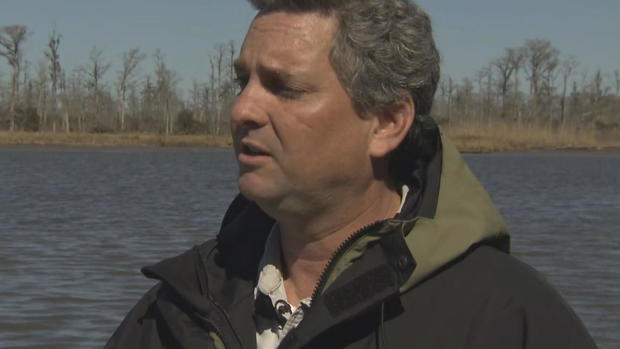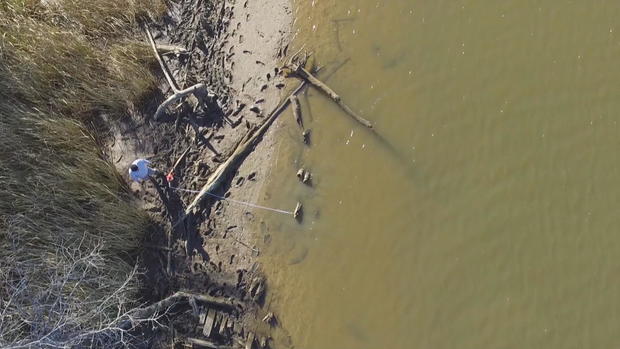How an Alabama reporter uncovered what may be America's last slave ship
EDITOR'S NOTE: Results of an investigation have found that the wreckage is not the Clotilda. Click here for the latest update.
In Alabama's Mobile Bay, a local newspaper reporter discovered what historians believe is probably the last slave ship to land in America, the Clotilda. The wreckage, normally covered by water, was recently exposed by unusually low tides.
"It was like pulling back a blanket along the shoreline and suddenly you could see who was under the covers. And there was the ship," said Al.com reporter Ben Raines.
He shot video of the wreckage of the Clotilda, mostly buried in mud, reports CBS News' Mark Strassmann. From an aerial view you can see the outline of the wooden hull along with its starboard side. Raines spent three months studying historical records, the captain's journal, and insurance documents, but proving it's definitely the Clotilda would mean raising the wreck.
"It's the right size, it's in the right location, the construction techniques show that it's the right age," Raines said. "Solving the mystery is in the mud."
In 1860, a year before the Civil War, owning slaves was still legal across the South, but importing them had been outlawed. Timothy Meaher, a wealthy Alabama plantation owner, made a sinister bet that he could break the law and bought the Clotilda.
"He outfitted it at his own cost and set out to do it just to prove he could," Raines said.
Meaher sent the two-masted cargo schooner nearly 6,000 miles to what is now Benin, West Africa. Captain William Foster returned months later with 110 slaves, mostly teenagers, and snuck them back into Mobile Bay. On July 9, 1860, Foster unloaded the slaves into a swamp and on Meaher's orders, burned the ship, hoping to destroy any trace of the crime.
"As I, you know, studied it more it became this more profound moment of 'holy cow' what this means to the families whose lives were interrupted and brought here and the generations since," Raines said.
Africatown, a few miles from the shipwreck, was settled by the Clotilda's freed slaves after the Civil War. Many descendants still live there today.
Cousins Alan Marshall and James Lee are the great-great grandchildren of Peter Lee -- whose original name was Gumpa before arriving to the U.S. according to Marshall. He survived the Clotilda and settled in Africatown.
Roughly 10 million slaves survived the dreaded Middle Passage from Africa to the New World. Many of Clotilda's descendants uniquely know exactly where their ancestors came from, when they got here, and even on which ship.
"I take pride in the fact that they were able to survive that passage to America," said William Green, who had two relatives on board the Clotilda. "Regardless of how you got here they are your ancestors. Often time maybe not under the best of circumstances. But yet you are here because of them."
What happens next is up to state and federal officials -- the sort of choice the Clotilda's human cargo never could have imagined.





